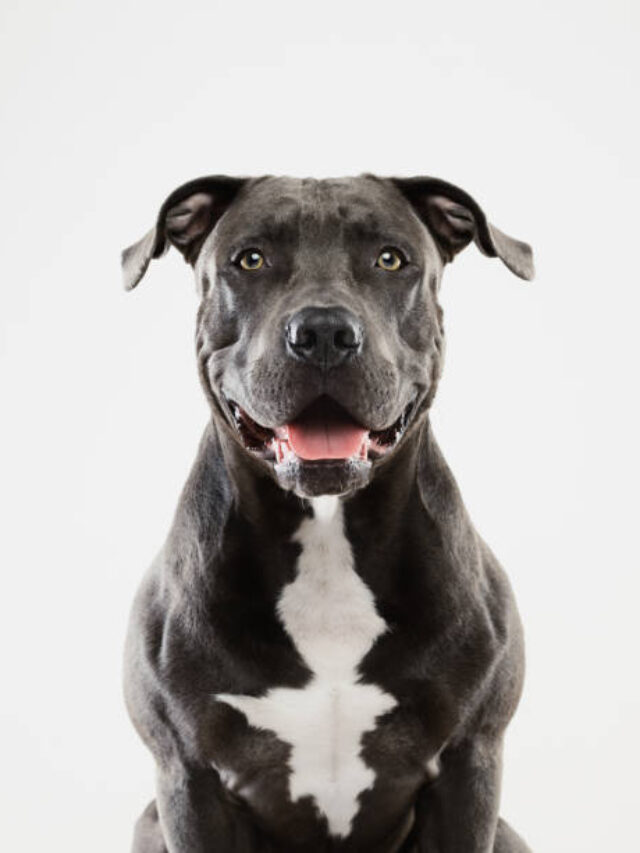Introduction
In a world where personal safety is becoming a priority, many families are turning to protective dog breeds for security—and with good reason. These loyal, powerful companions aren’t just excellent guardians; they’re also loving, intelligent, and deeply bonded to their owners. Protective dog breeds are more than just barking alarms. They’re loyal members of the family who’ll do whatever it takes to keep their loved ones safe. Whether you live in a countryside home or a city apartment, there’s a protective dog breed that can fit your lifestyle—if you’re willing to give them the attention and training they need.
These breeds aren’t just about brawn. Most protective dogs are incredibly smart and trainable, capable of learning complex commands and reacting with precision. Many are used in police, military, and rescue operations—not because they’re aggressive, but because they’re highly reliable and easy to train. That’s what makes them so special for home protection.
But before you bring one home, you need to understand what you’re signing up for. These dogs require training, exercise, and mental stimulation. Without the right environment and structure, a protective dog can become anxious or even dangerous. So, let’s break down the top 8 protective dog breeds you should consider—each with its unique qualities, needs, and personalities.
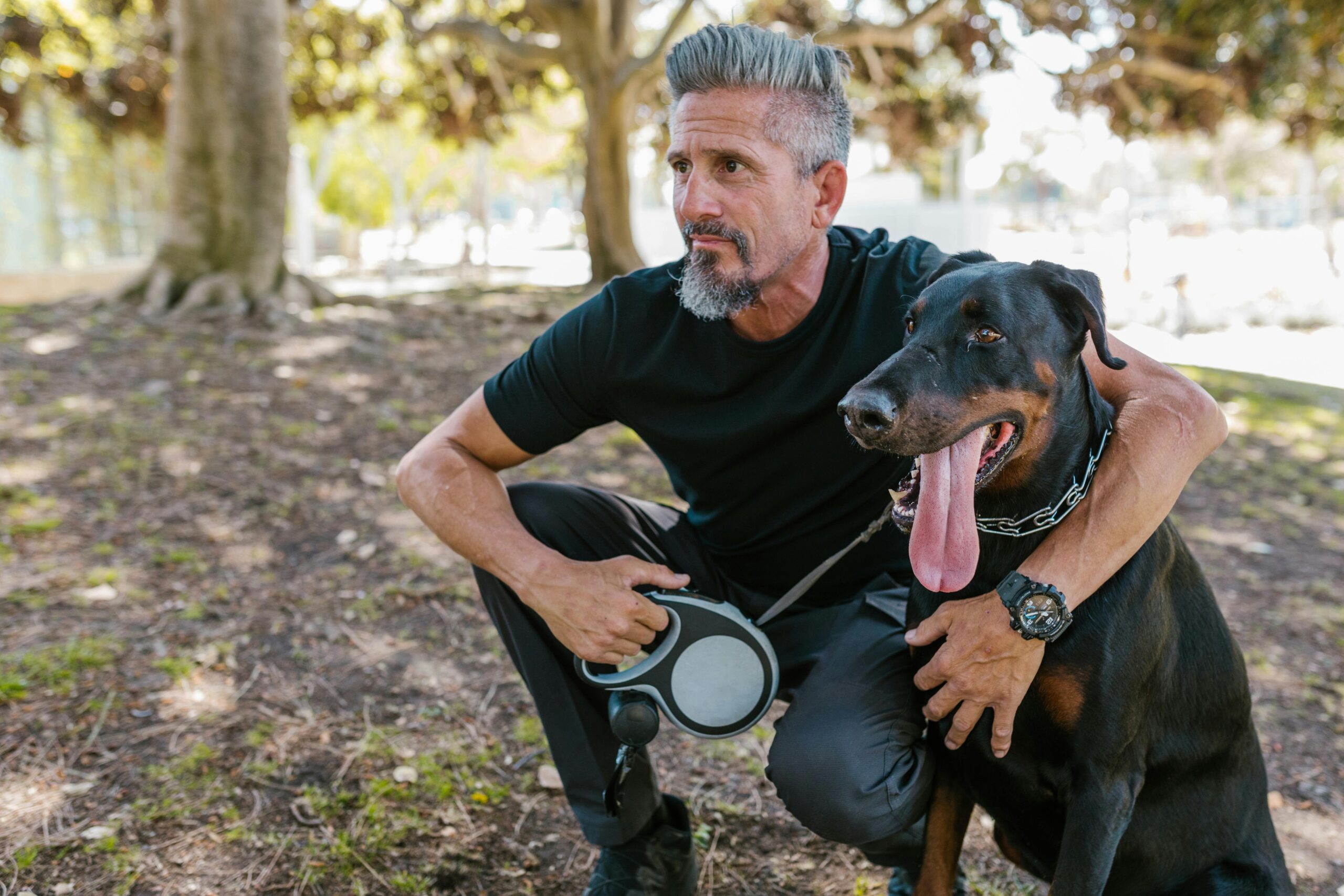
1. German Shepherd
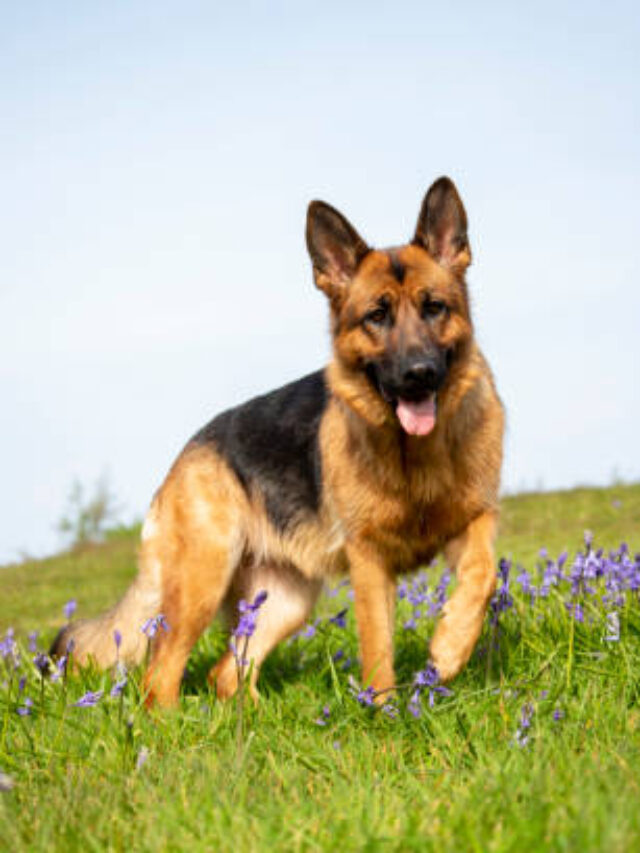
History and Origin
The German Shepherd is perhaps the most recognizable protective dog in the world. Originating in Germany in the late 1800s, the breed was developed by Captain Max von Stephanitz, who wanted a dog that was strong, intelligent, and capable of herding and protecting. Over the years, this breed evolved into a global powerhouse—not only guarding homes but also serving in military, police, and search and rescue operations.
Temperament and Behavior
German Shepherds are known for their unwavering loyalty. These dogs bond deeply with their families and are naturally alert. They are highly intelligent and require mental challenges to keep them engaged. Despite their serious demeanor, they are incredibly affectionate with those they trust and are particularly gentle with children.
They’re not the kind of dogs that warm up to strangers quickly—and that’s actually a good thing when you’re looking for protection. They instinctively assess situations and respond accordingly. A well-trained German Shepherd won’t bite unless provoked or unless it perceives a real threat.
Protection Skills
When it comes to guarding instincts, German Shepherds are elite. Their acute sense of smell, sharp hearing, and quick reflexes make them excellent watchdogs. They’re often trained to follow commands in multiple languages, which speaks volumes about their intelligence. Their muscular build, combined with agility, means they can go from calm to action-ready in a heartbeat.
Ideal for Which Owners?
German Shepherds thrive in homes where they have space to move and owners who are consistent with training. They’re not for couch potatoes. If you’re an active individual or family who loves structure and is committed to proper training, a German Shepherd can be your best friend—and your best protector.
2. Rottweiler
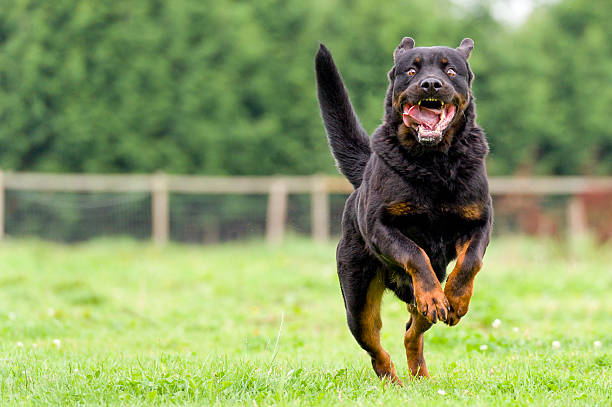
History and Background
Rottweilers trace their roots back to the Roman Empire, where they were used to herd cattle and protect livestock. As the Romans moved across Europe, these dogs were bred in the German town of Rottweil, hence the name. Their powerful stature, working ability, and natural guarding instincts made them indispensable in ancient and modern times alike.
Loyalty and Guarding Ability
Rottweilers are among the most loyal breeds you’ll ever meet. Their guarding ability is instinctual—they don’t need to be taught to protect, only how and when to act. These dogs are calm and confident, and they often observe before they react. Once they bond with their family, they’ll defend them with fierce loyalty.
They have a natural distrust of strangers, which, with proper socialization, can be managed without making them overly aggressive. They’re incredibly intuitive and can sense danger, reacting only when necessary.
Training and Socialization
Rottweilers are strong, muscular, and highly intelligent. Without proper training, though, they can become dominant and hard to control. Early socialization is key—introduce them to a variety of people, environments, and situations to help them become well-rounded adults.
They respond well to positive reinforcement and structured training routines. Consistency and leadership are essential; they need to respect you as the pack leader.
Is It Family-Friendly?
Despite their intimidating look, Rottweilers can be excellent family dogs. They’re known to be patient with children and incredibly affectionate at home. However, supervision is always recommended, especially with young kids. This breed thrives in homes where they’re treated as part of the family and given tasks or jobs to fulfill.
3. Doberman Pinscher
Breed Characteristics
Dobermans are sleek, fast, and athletic. Originally bred by a German tax collector named Karl Friedrich Louis Dobermann, they were created as protective companions capable of guarding their owners during work. Today, Dobermans are valued as one of the most intelligent and trainable guard dog breeds on the planet.
They typically stand between 24 to 28 inches tall and weigh between 70 to 100 pounds. Their lean, muscular bodies and sharp expressions make them both elegant and intimidating.
Why They’re Excellent Guard Dogs
Dobermans are fiercely loyal and naturally protective. They’re quick thinkers and excellent at identifying threats. Their speed and agility make them particularly effective in home protection, and they’re often used in law enforcement for tracking and detaining.
One unique trait of the Doberman is its balanced aggression. It won’t react unless it senses an actual threat, making it a reliable protector rather than a loose cannon.
Also Like These : How to Train Your Dog Like a Pro : 6 Simple Dog Training Tips That Really Work
Also Read : 6 Easy Homemade Dog Food Recipes Your Pup Will Love
Living Conditions
Dobermans do best in environments where they have space to move. They’re not ideal for small apartments unless exercised frequently. They also need mental stimulation—puzzles, training, and play are crucial to keeping them happy.
They don’t do well left alone for long periods. Dobermans are incredibly social and form deep bonds with their owners. If left isolated, they can become anxious or destructive.
Health and Grooming Tips
Dobermans are generally healthy but can be prone to conditions like dilated cardiomyopathy and hip dysplasia. Regular vet visits, a proper diet, and exercise help maintain their overall well-being.
Grooming is minimal thanks to their short coat—just a weekly brushing is enough to keep them looking sharp.
4. Bullmastiff
Origins and Purpose
The Bullmastiff was developed in 19th-century England to protect estates from poachers. A mix between the Bulldog and Mastiff, this breed was bred to be both powerful and silent. It was designed to apprehend intruders without causing serious harm, making it a natural guard dog that doesn’t bark without reason.
Calm but Protective Nature
Despite their massive size and strength, Bullmastiffs are gentle giants. They are calm, quiet, and incredibly affectionate with their families. However, when faced with a threat, they turn into fearless protectors.
Bullmastiffs don’t attack out of nowhere—they observe and assess. Their sheer size is often enough to deter unwanted visitors, and their loyalty ensures they won’t back down in the face of danger.
Best Suited Environments
Bullmastiffs adapt well to both rural and suburban environments. They don’t require excessive exercise but need regular walks to maintain health. Their calm demeanor makes them suitable for households with children, but supervision is still a must due to their size.
Exercise and Care Needs
These dogs are relatively low-energy. A daily walk and some light playtime will keep them content. They’re prone to heat exhaustion, so avoid excessive outdoor activity in hot climates.
Their short coat requires minimal grooming, but their facial wrinkles should be cleaned regularly to avoid infections.
5. Belgian Malinois
Military and Police Roles
If there’s one breed dominating the field in modern military and police work, it’s the Belgian Malinois. This breed is the go-to for Navy SEALs, police K9 units, and search-and-rescue teams. Why? Because they’re agile, focused, and fearlessly protective.
6. Cane Corso
Italian Heritage
The Cane Corso, pronounced “KAH-nay KOR-so,” is a powerful Italian mastiff with roots tracing back to ancient Roman war dogs. Bred to guard property and hunt big game like wild boar, this breed has a long history of working side by side with humans. The word “Corso” comes from the Latin “cohors,” meaning “guardian” or “protector,” which sums up the breed perfectly.
This breed is known for its strong, muscular build, broad chest, and confident demeanor. When a Cane Corso walks into the room, people take notice—not just because of its size, but because of its calm and assertive energy.
Powerful Build and Loyalty
Cane Corsos are deeply loyal to their families. They bond closely with their owners and are extremely protective dog , making them natural guardians. Their powerful build and keen alertness make them an intimidating deterrent to intruders. However, they’re not aggressive by default—they are intelligent and very responsive to good leadership.
Their instinct to protect runs deep. They’ll put themselves between their family and a perceived threat without hesitation. Yet, they are not reckless; they evaluate the situation before reacting, which makes them highly reliable.
Guarding Instincts
This breed has a strong territorial instinct. Cane Corsos are incredibly vigilant and always on high alert. They’re not the type to tolerate strangers lingering around the property. A well-trained Cane Corso will remain calm unless provoked, then act swiftly and decisively.
Socialization is important—if left untrained or unsocialized, their protectiveness can become problematic. Early exposure to different people, places, and experiences helps them grow into balanced and manageable adults.
Suitable Homes
Cane Corsos are best suited for experienced dog owners who can establish themselves as firm, confident leaders. They require a home with a secure yard, not an apartment or small indoor space. These dogs thrive in environments where they have a clear role and boundaries.
Daily walks, mental stimulation, and basic obedience training are necessary to keep them well-adjusted. They also benefit from structured playtime and jobs, such as guard duty or obedience challenges.
7. Akita
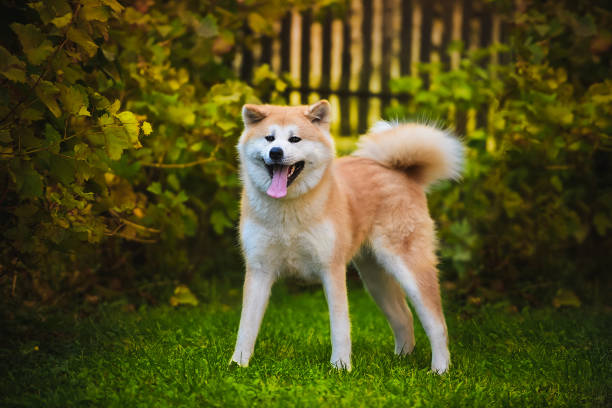
Japanese History
The Akita hails from Japan, where it has been a symbol of protection, health, and long life for centuries. Originally bred to hunt large game such as bear and boar, the Akita was also tasked with guarding royalty and nobility. There are two main types of Akitas: the Japanese Akita Inu and the American Akita. Both share similar traits but differ slightly in size and appearance.
Hachikō, the famously loyal Akita who waited at a train station for his deceased owner every day for nearly 10 years, is a national icon in Japan. That story speaks volumes about this breed’s loyalty.
Fearless and Loyal Nature
Akitas are bold, brave, and incredibly loyal. They’re not overly affectionate with strangers and can be aloof outside their family circle—but with their own people, they are loving and deeply attached. Their protective instinct is strong, and they won’t hesitate to defend their home and family.
What makes the Akita unique is their quiet strength. They don’t bark much, but when they do, it usually means something’s up. Their alert and composed demeanor makes them natural watchdogs. They’re also known for their independent thinking, which can be both a strength and a challenge in training.
Training and Socialization
Akitas require consistent and early socialization. Without it, they can become territorial and potentially aggressive toward unfamiliar people or animals. They need a firm but gentle hand and thrive when they know their place in the family hierarchy.
Training should begin from puppyhood. They respond best to positive reinforcement and clear, confident commands. Harsh discipline doesn’t work with Akitas—it will only push them away.
Unique Care Tips
Akitas have a dense double coat that sheds heavily, especially during seasonal changes. Regular grooming is a must. They are generally clean dogs but can be prone to autoimmune diseases and hip dysplasia, so regular vet checkups are important.
Because of their size, strength, and dominant personality, Akitas are best suited for experienced dog owners who can invest time in training and structure.
8. Giant Schnauzer
Origin and History
Giant Schnauzers were originally bred in Germany to drive cattle and guard farms. Over time, their intelligence and strength made them ideal candidates for police and military work. They’re the largest of the Schnauzer breeds and are known for their commanding presence and sharp intelligence.
These protective dogs combine the best of both worlds: they’re working dogs with a regal appearance and the brains to match.
Protective Traits
Giant Schnauzers are naturally protective dog and territorial. Their loyalty to their family is unmatched, and they will not hesitate to place themselves between you and a perceived threat. Unlike some breeds that require aggressive training to develop guarding instincts, Schnauzers already have the protective gene built-in.
They are incredibly alert and will always let you know when something—or someone—is out of place. This makes them excellent watchdogs in both urban and rural settings.
Energy Levels and Exercise Needs
This is a high-energy breed that requires a lot of mental and physical stimulation. Giant Schnauzers need at least an hour of vigorous activity daily. Without it, they can become restless, bored, and even destructive.
They excel in obedience, agility, and protection sports, which makes them ideal for active families or individuals who enjoy outdoor activities and dog training.
Adaptability
While they do best in homes with yards, Giant Schnauzers can adapt to apartment living if they get enough exercise. However, their size and energy levels mean they’re better suited to larger spaces.
They’re also highly trainable but need firm leadership and consistent rules. Socialization is important to prevent overprotectiveness or reactivity toward other animals.
Their wiry coat needs regular grooming, and their strong will needs a confident owner who can keep them mentally engaged.
How to Choose the Right Protective dog for You
Family Setup
Are you living alone, with a partner, or with young kids? Some breeds, like the Bullmastiff or German Shepherd, are more tolerant of children. Others, like the Akita or Cane Corso, need more supervision and socialization to be kid-friendly. Always consider how the breed interacts with all members of the household.
Property Type
Your living space plays a huge role in choosing the right breed. Apartments and small homes are best suited for medium-sized, low-energy protectors like the Bullmastiff. If you’ve got land or a large backyard, you can consider more energetic breeds like the Belgian Malinois or Cane Corso.
Lifestyle & Activity Level
Protective dog breeds are working dogs—they need exercise and mental challenges. If you’re someone who enjoys hiking, training, or spending active time with your dog, a high-energy breed like the Doberman or Giant Schnauzer could be perfect. If you’re more low-key, a calmer breed like the Rottweiler or Bullmastiff may be a better match.
Choosing a protective dog breed is about more than just looks or reputation. It’s about finding the right personality, energy level, and temperament that fits seamlessly into your life.
Basic Training Tips for Protective Dog Breeds
Early Socialization
One of the most critical elements of raising a protective dog breed is early socialization. Without proper exposure to a variety of people, environments, and experiences, even the most well-bred protective dogs can become overly aggressive, anxious, or unmanageable.
Start socializing your puppy from as early as 8 weeks old. Let them meet friendly strangers, walk in busy environments, and interact with other dogs. The goal is to teach them what is “normal,” so they can distinguish between everyday situations and real threats.
Make these experiences positive—use treats, praise, and toys to reinforce good behavior. The more comfortable your dog becomes with the outside world, the more stable and trustworthy they will be when protective instincts kick in.
Obedience Training
Training isn’t optional—it’s a necessity. A protective dog without training is like a loaded gun without a safety switch. You need full control over your dog at all times, especially in unfamiliar or stressful situations.
Start with the basics: sit, stay, come, down, and heel. Once mastered, move to advanced obedience like off-leash control, recall under distraction, and focus work. These skills ensure your dog listens to you, no matter what’s going on around them.
Use positive reinforcement methods—punishment-based training can damage the trust between you and your dog. Keep sessions short, consistent, and fun.
Professional Help or DIY?
While some owners may feel confident training their dogs on their own, professional training is highly recommended for protective dog breeds. Certified trainers, especially those who specialize in working dogs, understand the nuances of these breeds and can offer personalized programs.
Group classes are great for socialization, while one-on-one sessions are ideal for correcting behavioral issues. Protection training should never be done at home without guidance—it involves complex obedience and controlled aggression, which require professional handling.
Investing in proper training now can save you from behavioral problems down the road. It also ensures your protective dog is a reliable, safe, and confident member of your family.
Pros and Cons of Owning a Protective Dog Breed
Benefits
- Enhanced Security: These Protective dog breeds are natural deterrents. A bark from a Rottweiler or Cane Corso is often enough to keep intruders away.
- Loyalty and Bonding: Protective dog breeds are incredibly loyal and form deep bonds with their families. They’re loving, dependable companions who’ll always have your back.
- Multi-purpose Pets: Many of these breeds excel in obedience, agility, and working roles. They’re not just protectors—they’re also great for active lifestyles.
- Peace of Mind: Whether you’re home alone or traveling with your dog, you can feel safer knowing they’re trained to sense and react to danger.
Challenges
- Training Demands: These Protective dogs breeds require early, consistent training and socialization. Without it, their natural instincts can become problematic.
- Time and Energy: Most protective dog breeds are high-energy and require daily exercise, mental stimulation, and engagement.
- Size and Strength: Many are large and strong, which makes handling them difficult for inexperienced owners.
- Cost: Quality food, vet bills, and training sessions can add up quickly—especially for larger breeds.
Long-Term Considerations
Before bringing home a protective dog, think about the long term. Are you ready to dedicate the next 10–12 years to training, exercising, and caring for a powerful dog? Will your lifestyle accommodate a large, alert pet who doesn’t like being left alone for long?
These dogs aren’t for everyone—but for the right owner, they are unmatched companions. When properly trained and integrated into the family, they offer a balance of love, loyalty, and protection that’s hard to beat.
Conclusion
Choosing the right protective dog breed is more than just picking the toughest or most intimidating-looking pup. It’s about understanding the responsibilities, needs, and temperament of each breed—and making sure they align with your lifestyle.
Whether you choose the intelligent German Shepherd, the fierce yet loyal Rottweiler, or the watchful Cane Corso, one thing’s for sure: these dogs will go to the ends of the earth to protect the ones they love. But remember—these breeds aren’t plug-and-play security systems. They’re living, breathing animals that need structure, training, love, and time.
When you invest in their training and socialization, you’re not just creating a bodyguard—you’re gaining a loyal best friend. If you’re up for the challenge and committed to responsible dog ownership, any of the breeds on this list can become an extraordinary part of your life.
FAQs
1. Are protective dog breeds safe around kids?
Yes, many protective dog breeds are great with children, especially when raised and socialized from a young age. Breeds like the Bullmastiff, Rottweiler, and German Shepherd can be very gentle with kids. However, supervision is always recommended due to the dog’s size and strength.
2. Do protective dog require professional training?
While not mandatory, professional training is highly recommended for protective dog. It ensures proper socialization, obedience, and helps control their guarding instincts effectively and safely.
3. Can I have a protective Dog in an apartment?
Some protective Dog can adapt to apartment living, like the Bullmastiff or Akita, as long as they get daily exercise. High-energy breeds like the Belgian Malinois or Giant Schnauzer are better suited for homes with yards.
4. Which protective Dog is easiest to train?
German Shepherds and Dobermans are considered the easiest to train among protective dog due to their intelligence, eagerness to learn, and responsiveness to commands.
5. How do I introduce my protective dog to guests?
Start with calm, positive introductions. Keep your dog on a leash, allow them to observe from a distance, and reward calm behavior. Over time, they’ll learn who’s a friend and who’s not. Socialization from puppyhood plays a big role in how they handle new people.
